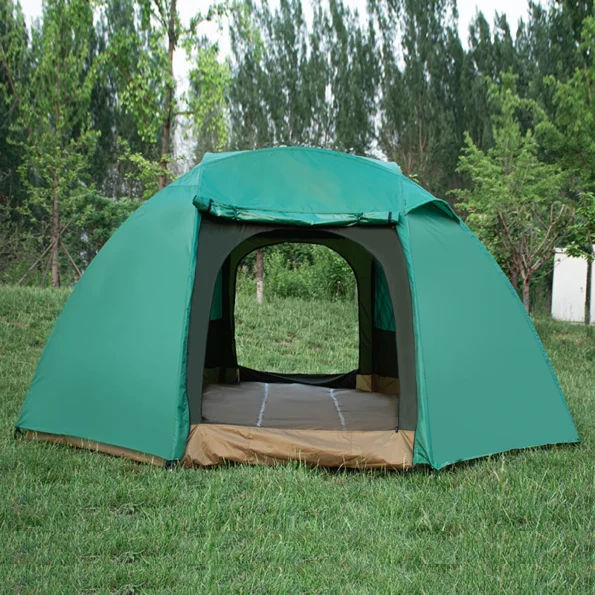Table of Contents
Pop up tents have revolutionized the camping experience, offering convenience and simplicity like never before. Whether you’re a seasoned outdoor enthusiast or a novice camper, pop-up tents provide an easy solution for shelter on your adventures. In this comprehensive guide, we’ll explore everything you need to know about pop-up tents, from their types and benefits to setting them up and caring for them.
Introduction
Pop-up tents, as the name suggests, are tents that ‘pop up’ into shape when unfolded. They are designed to be incredibly easy to set up, typically requiring minimal effort and time. These tents have gained immense popularity among campers, hikers, festival-goers, and anyone else seeking hassle-free shelter in the great outdoors.
Types of Pop Up Tents
Instant Pop-Up Tents
Instant pop-up tents are the most common type and are characterized by their quick setup process. With just a flick of the wrist, these tents spring into shape, making them ideal for spontaneous camping trips.
Cabin-Style Pop-Up Tents
Cabin-style pop-up tents offer more vertical space than other types, resembling a small cabin when fully set up. They provide ample room for standing and moving around inside, making them popular among families and groups.
Dome-Style Pop-Up Tents
Dome-style pop-up tents feature a curved roof, which helps to shed rainwater and snow more effectively. They are lightweight and compact, making them a favorite among backpackers and solo adventurers.
Benefits of Pop-Up Tents
Pop-up tents offer several advantages that make them stand out from traditional tents:
Easy Setup and Takedown
The most significant advantage of pop-up tents is their effortless setup and takedown process. Unlike conventional tents that require poles and stakes, pop-up tents can be assembled in a matter of seconds, allowing you to spend more time enjoying your outdoor activities.
Portability
Pop-up tents are lightweight and compact, making them easy to transport and store. Whether you’re backpacking through the wilderness or traveling to a music festival, pop-up tents are convenient companions that won’t weigh you down.
Durability
Despite their quick setup design, pop-up tents are durable and reliable. They are made from high-quality materials that can withstand the elements, ensuring that you stay protected and comfortable during your outdoor adventures.

Factors to Consider When Choosing a Pop-Up Tent
When selecting a pop-up tent, there are several factors to keep in mind:
Size
Consider how many people will be sleeping in the tent and whether you need extra space for gear. Most pop-up tents are available in various sizes to accommodate different group sizes.
Material
Look for tents made from durable, waterproof materials such as polyester or nylon. These materials will ensure that your tent remains dry and comfortable in rainy or humid conditions.
Weather Resistance
Choose a tent with adequate ventilation and weatherproofing features to keep you comfortable in all seasons. Look for tents with rainflys, taped seams, and adjustable vents for optimal airflow.
How to Set Up a Pop-Up Tent
Setting up a pop-up tent is a straightforward process that can be completed in a few simple steps:
- Remove the tent from its carrying bag and lay it flat on the ground.
- Locate the center of the tent and grab the top of the frame.
- Gently toss the tent into the air, allowing it to pop up into shape.
- Secure the tent to the ground using stakes or weighted bags.
- Adjust the tent as needed to ensure it is stable and taut.
Popular Brands of Pop Up Tents
Several brands specialize in pop-up tents, each offering unique features and designs:
- Coleman: Known for their durable and affordable tents suitable for all types of outdoor adventures.
- Quechua: Offers a wide range of innovative pop-up tents designed for camping, hiking, and beach trips.
- Ozark Trail: Provides budget-friendly pop-up tents with reliable performance and easy setup.
Maintenance and Care Tips
To prolong the life of your pop-up tent, follow these maintenance and care tips:
Cleaning
Regularly clean your tent with mild soap and water to remove dirt and debris. Avoid using harsh chemicals or abrasive cleaners, as they can damage the tent’s fabric and waterproof coating.
Storage
Store your tent in a cool, dry place when not in use, preferably in a breathable storage bag. Avoid folding or compressing the tent too tightly, as this can damage the fabric and seams over time.

Creative Uses for Pop Up Tents
In addition to camping, pop-up tents can be used for a variety of outdoor activities:
- Outdoor Events: Pop-up tents are perfect for tailgating, picnics, and outdoor parties, providing instant shade and shelter.
- Beach Trips: Protect yourself from the sun and wind at the beach with a pop-up tent that sets up in seconds.
- Festivals: Stay comfortable and dry at music festivals and outdoor events with a pop-up tent for sleeping or relaxing between performances.
Environmental Impact of Pop-Up Tents
While pop-up tents offer convenience and comfort, it’s essential to consider their environmental impact:
Sustainability Considerations
Choose tents made from eco-friendly materials whenever possible, such as recycled fabrics or biodegradable coatings. Look for brands that prioritize sustainability and minimize waste in their manufacturing processes.
Recycling Options
When it’s time to replace your pop-up tent, consider recycling it rather than sending it to the landfill. Many outdoor retailers offer recycling programs for old tents, ensuring that they are disposed of responsibly.
Conclusion
Pop-up tents are a game-changer for outdoor enthusiasts, offering easy setup, portability, and durability in one convenient package. Whether you’re camping in the wilderness or lounging at a music festival, a pop-up tent provides instant shelter wherever you go.











